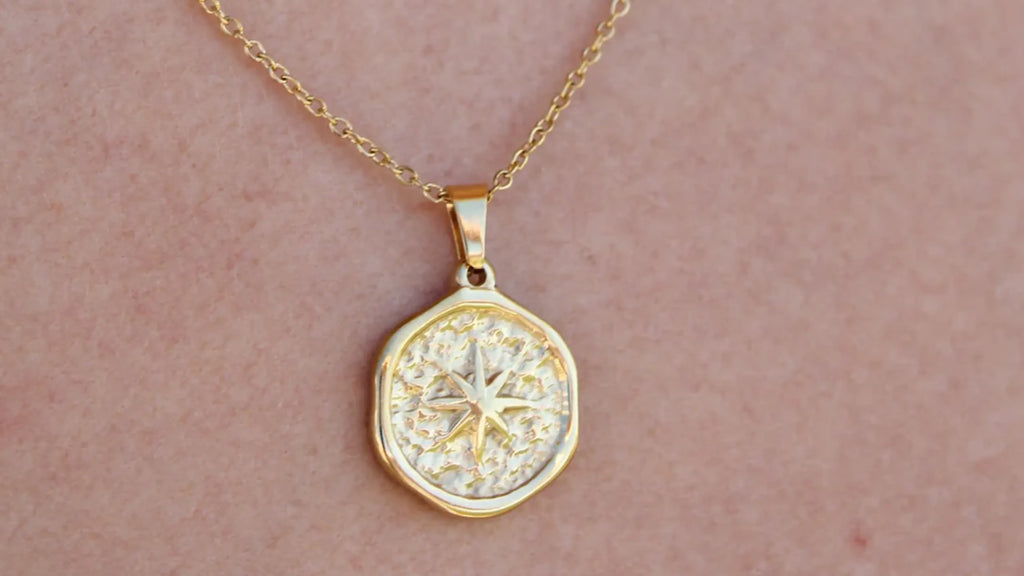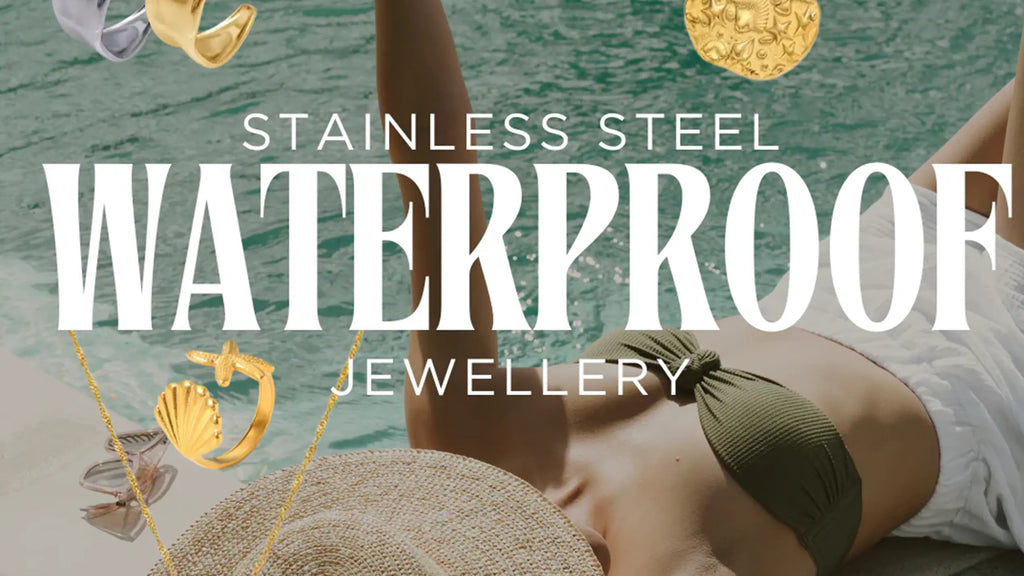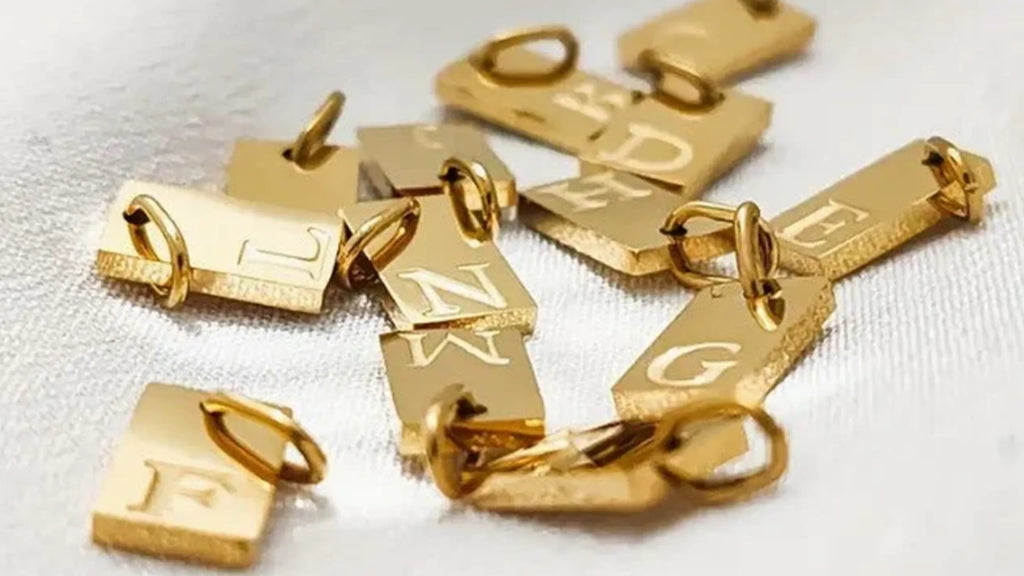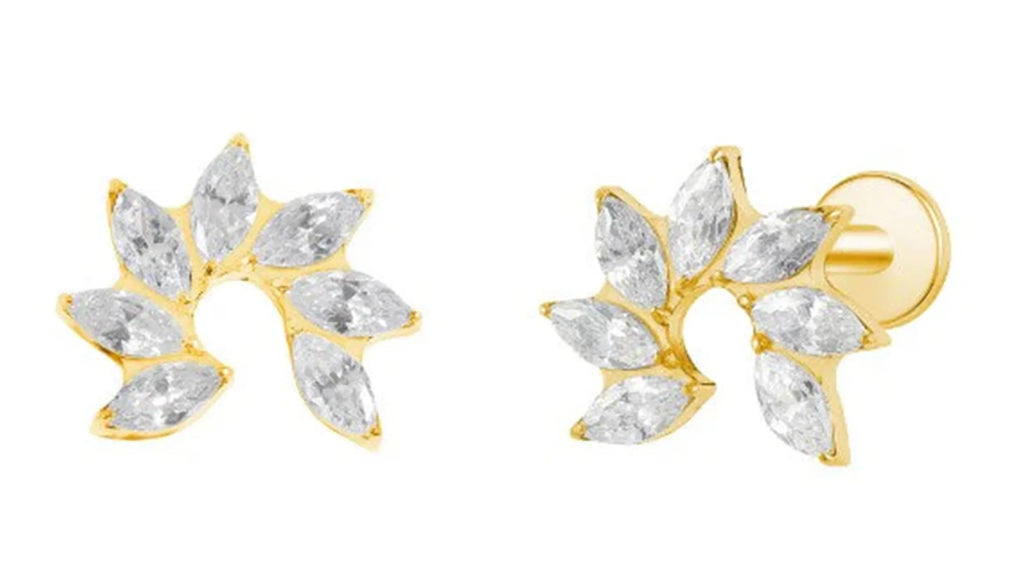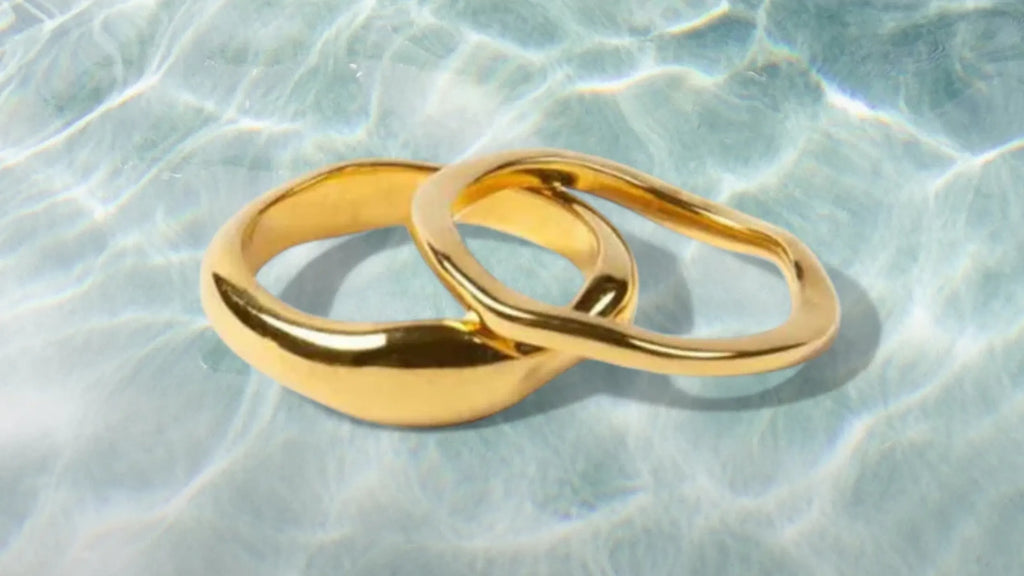Why is 316L Stainless Steel Better then 304 Stainless Steel?
Here is a breakdown of why 316L stainless steel is better than 304 stainless steel, especially for jewellery:
-
Molybdenum Content – 316L contains 2–3% molybdenum, which 304 does not. This makes it significantly more resistant to corrosion, especially in saltwater, sweat, and harsh environments.
-
Superior Corrosion Resistance – 316L is more resistant to pitting and rust caused by chlorides (like seawater and cleaning chemicals). 304 is more prone to tarnish and corrosion over time.
-
Better for Sensitive Skin – 316L has a lower carbon content (“L” = low carbon), making it gentler and hypoallergenic compared to 304, which can sometimes cause irritation.
-
Longevity & Durability – Jewellery made from 316L lasts longer, keeping its shine and structural integrity, whereas 304 may dull, pit, or corrode faster.
-
Higher-Grade Standard – 316L is considered a “surgical grade” stainless steel, trusted for medical implants and body jewellery, while 304 is more of a general-use kitchen/industrial grade.
-
Premium Look & Value – Because of its strength, resistance, and safety, 316L is the preferred choice for luxury and waterproof jewellery brands, while 304 is often used in cheaper alternatives.
👉 In short: 304 is fine for cutlery and kitchen sinks, but 316L is made for skin contact, saltwater, and everyday wear — making it the superior choice for jewellery.
"Why Premium 316L Stainless Steel is the Ultimate Choice for Waterproof Jewellery"
When it comes to jewellery, durability and style should go hand in hand—especially for those who live an active lifestyle. For anyone who enjoys swimming, travelling, or simply doesn’t want to worry about taking off their accessories, Premium Stainless Steel stands out as the best metal choice for waterproof jewellery.
In this blog, we’ll explore the numerous benefits of premium stainless steel and why it should be your go-to material for elegant and resilient jewellery.
1. Exceptional Durability
Unlike traditional metals that can tarnish, rust, or corrode when exposed to water, premium 316L stainless steel signifies a high-quality, low-carbon grade of stainless steel known for its durability, corrosion resistance, and hypoallergenic properties, making it ideal for body piercings and everyday wear.
Its robust nature makes it perfect for everyday wear and aquatic adventures, ensuring that your jewellery remains as stunning as the day you bought it.
2. Water and Corrosion Resistant
One of the most significant advantages of 316L Stainless Steel is its innate ability to resist moisture and corrosion. This means no more worrying about taking your favourite necklace off before swimming in the pool or ocean. With premium stainless steel, you can dive in and stay stylish without compromise!
3. Hypoallergenic Properties
For many, metal allergies can be a major concern. The "L" in 316L signifies that the alloy has a low carbon content, enhancing its durability and reducing the risk of skin irritation. So it is less likely to cause skin irritation or allergic reactions. This quality allows wearers to enjoy their jewellery without fear of discomfort, making it an ideal choice for everyone.
4. Timeless Style and Versatility
In addition to its practical benefits, premium stainless steel offers a sleek and modern aesthetic that complements any outfit. Whether you’re dressing up for a night out or heading to a casual gathering, your stainless steel jewellery can seamlessly transition from chic to sporty, providing you with versatile styling options.
5. Eco-Friendly Choices
Sustainability is a growing concern for many consumers today. Stainless steel is often made from recycled materials, making it an environmentally conscious choice. By opting for stainless steel jewellery, you’re not only treating yourself to beautiful pieces but also supporting eco-friendly practices in the fashion industry.
6. Low Maintenance
Caring for premium stainless steel jewellery is incredibly easy. Unlike other materials that require special cleaning and care, stainless steel can be easily cleaned with mild soap and water. This low maintenance factor makes it a perfect choice for busy individuals who want to keep their jewellery looking fabulous without the hassle.
When choosing the perfect metal for waterproof jewellery, premium stainless steel emerges as the clear winner. Its durability, resistance to corrosion, hypoallergenic properties, and timeless style not only meet the needs of an active lifestyle but also cater to modern-day sensibilities around sustainability.
Whether you're out for a swim or simply want to wear your favourite pieces without worry, premium stainless steel jewellery combines beauty and functionality seamlessly—making it the ultimate choice for today's dynamic individuals. Embrace the elegance and resilience of premium stainless steel and discover how it can elevate both your style and your love for adventure!
How to Apply Your Mariposa Initial Pendant Charm to Your Necklace: A Step-by-Step Guide
Welcome to our guide on how to securely attach your "Mariposa" Initial Pendant charm to your necklace! We understand that some charm o-rings may not fit every necklace, so we've crafted this easy-to-follow tutorial to help you showcase your beautiful charm with ease.
Materials Needed
- Mariposa Initial Pendant charm
- Jewellery pliers or a pair of tweezers
- Necklace (that you want to use the charm with)
Step-by-Step Instructions
Step 1: Remove the Charm from its Packaging
Begin by carefully taking the charm out of its packaging. Ensure you handle it gently to avoid any damages.
Step 2: Identify the Existing O-Ring
Look at the charm and locate the o-ring. This is the small round metal loop that connects the charm to the chain.
Step 3: Open the O-Ring
Using your jewellery pliers or tweezers, gently grasp the o-ring. To open it, push one side of the ring away from you while pulling the other side toward you. Be careful not to distort the shape of the o-ring.
Step 4: Attach the Charm to Your Necklace
Now, slide the o-ring onto your necklace chain. Ensure it is positioned where you want the charm to hang.
Step 5: Secure Everything
Once the charm is on your necklace, close the o-ring by reversing the opening process. Make sure it’s tightly secured to prevent the charm from falling off.
Watch Our Video Demonstration!
For a visual guide, check out our step-by-step video here to see the process in action. Watching it may help clarify any steps that seem tricky.
Now you can wear your "Mariposa" Initial Pendant charm with confidence!
The Cartilage & Helix Piercing - The Perfect Placement
What is a Helix Piercing?
A helix piercing is a type of ear piercing that occurs in the helix area of your ear cartilage. The outer ear consists mainly of two regions: the earlobe and cartilage. Within the cartilage section, there are several specific piercing zones including the conch, helix, rook, daith, and tragus. If you’re unfamiliar with these terms, don’t worry — we've got an overview of the different ear piercing types available for you.
Focusing on the helix, this area refers to the cartilage that runs along the outer edge and top of your ear, tapering off where it curves into your face.
Check out our easy "how-to" guide to help you master your ear stack styling—and maybe even take the leap with a stylish, ear-boosting helix piercing. Before you dive in, though, let’s break down what a helix piercing is, what the process entails, and then dive into some fun styling inspiration.
Whatever the reason behind our shared obsession with a curated ear, it’s a trend that’s gaining more followers every day. If you're reading this, you’re probably ready to try it for yourself. Maybe you’ve already experimented with stacked earrings and second lobe piercings, and now you’re looking to step it up. After all, it’s when your piercings reach the helix that the real ear party begins.
Various Helix Piercing Styles & Placements
Helix piercings come in a range of styles, widely celebrated for their visual appeal and versatility in accessories! Considering a helix piercing for your next addition? Here’s a breakdown of the most popular helix piercing types below:
Types of Helix Piercings Placements:
Single Helix Piercing
A single helix piercing is an ear piercing that is placed through the upper cartilage of the ear, usually along its outer edge. It's termed "single" because it consists of just one piercing in the helix region, unlike double or triple helix piercings, which feature multiple holes.
Double Helix Piercing
Looking for a helix piercing that stands out? A double helix piercing consists of two helix piercings arranged vertically, one positioned above the other. This arrangement is located on the outer edge of the ear, just below the natural curve of the upper earlobe. A popular styling option is to adorn it with two small diamond studs placed side by side for a sleek and minimalist jewellery look.
Triple Helix Piercing
For those seeking the perfect curated ear aesthetic, a triple helix piercing is an excellent choice to enhance your ear jewellery. This arrangement consists of three piercings that follow the natural curve along the top of your earlobe, creating a stunning silhouette. With small studs, a triple helix piercing offers a simplistic and elegant fine jewellery appearance that many desire.
Forward Helix Piercing
Positioned opposite a standard helix piercing, the forward helix piercing resembles a daith piercing and is located in the inner cartilage of the ear. It is placed slightly higher than the daith, where the cartilage is a bit thinner. This stylish piercing offers a beautiful aesthetic and is commonly adorned with a small hoop or stud.
The Benefits of Water-Safe Jewellery: Style Meets Durability
Water-safe jewellery has become a popular choice for those who love to combine style with functionality.
Here are some key benefits that highlight the appeal of these durable pieces:
1. Versatile Wear: Water-safe jewellery is designed to withstand exposure to water, making it perfect for various occasions—whether you're at the beach, poolside, or simply enjoying a rainy day. You can wear it without worry, knowing it won't be damaged by sweat or moisture.
2. Durability and Longevity: Crafted from high-quality materials such as stainless steel, silicone, or specially treated metals, water-safe jewellery is resistant to rust, tarnish, and corrosion. This durability ensures that your favourite pieces last longer, maintaining their beauty over time.
3. Easy Maintenance: Unlike traditional jewellery that may require special care, water-safe pieces are often easier to clean and maintain. Most can be rinsed off with water, and occasional mild soap solutions can help keep them looking new. This convenience is a major plus for busy lifestyles.
4. Fashion Forward: Water-safe jewellery comes in a wide range of styles, colours, and designs, making it easy to find pieces that match your personal style. From elegant bracelets to trendy necklaces, there are options for every taste, ensuring you never have to sacrifice style for functionality.
5. Peace of Mind: With water-safe jewellery, you can enjoy your activities without the worry of losing or damaging your accessories. Whether swimming, exercising, or engaging in outdoor adventures, you can focus on your experience rather than constantly checking your jewellery.
6. Perfect for Active Lifestyles: For fitness enthusiasts, travellers, and those with an active lifestyle, water-safe jewellery offers a practical solution that complements workouts and outdoor activities. Its resilience makes it the ideal companion for those who lead dynamic lives.
7. Great for Gifting: Water-safe jewellery makes a thoughtful gift for friends and family, especially for those who love outdoor activities or travel. Its versatility and durability make it a practical choice that recipients can enjoy for years.
In conclusion, water-safe jewellery combines durability with style, making it an ideal accessory for everyday wear and adventure. With benefits ranging from easy maintenance to a wide variety of designs, it's no wonder that this trend is gaining popularity among fashion-conscious individuals who want jewellery that keeps up with their active lifestyles.
Explore the options available, and discover how water-safe jewellery can elevate your accessory collection!
"Caring for Your Water-Safe Jewellery: Dos and Don'ts"
Your go to guide on how to properly care for your water-safe jewellery to ensure longevity, from cleaning tips to storage advice.
Sure! Here’s a list of dos and don’ts for caring for your water-safe jewellery while not wearing it, along with effective cleaning methods:
Dos and Don'ts for Caring for Water-Safe Jewelry:
Dos:
1. Store Properly: Keep your jewellery in a cool, dry place. Use a jewellery box or pouch to prevent tangling and scratching.
2. Keep Away from Chemicals: Although water-safe, avoid prolonged exposure to harsh chemicals (like chlorine or bleach) to maintain the integrity of the materials.
3. Use Soft Cloths: Store jewellery wrapped in a soft cloth to protect it from dust and scratches.
4. Check for Damage: Regularly inspect your jewellery for any signs of wear or damage, ensuring clasps and settings are secure.
5. Separate Pieces: Store different pieces separately to avoid scratching or tangling.
Don'ts:
1. Avoid Direct Sunlight: Don’t expose your jewellery to direct sunlight for extended periods, as this can lead to fading or discoloration.
2. Don’t Store in Humid Areas: Avoid storing jewellery in humid places like bathrooms, which can contribute to tarnishing.
3. Don’t Use Harsh Cleaners: Avoid using abrasive materials or harsh chemicals when cleaning your jewellery.
Ways to Clean Your Water-Safe Jewellery:
1. Mild Soap and Water: Mix a few drops of mild dish soap in warm water. Soak your jewellery for a few minutes, then gently scrub with a soft toothbrush. Rinse thoroughly and pat dry with a soft cloth.
2. Jewellery Cleaning Solution: Use a jewellery cleaner specifically designed for safe materials. Follow the manufacturer's instructions for soaking and rinsing.
3. Vinegar and Baking Soda: For an eco-friendly option, create a paste using equal parts vinegar and baking soda. Apply it to your jewellery, gently scrub, and rinse well.
4. Ultrasonic Cleaner: If recommended, an ultrasonic cleaner can be a gentle way to remove dirt and grime, ensuring you follow the instructions carefully.
5. Soft Polishing Cloth: Use a soft polishing cloth to buff your jewellery after cleaning, restoring shine without scratching the surface.
These tips can help you maintain your water-safe jewellrey in excellent condition while enjoying its beauty and functionality.

